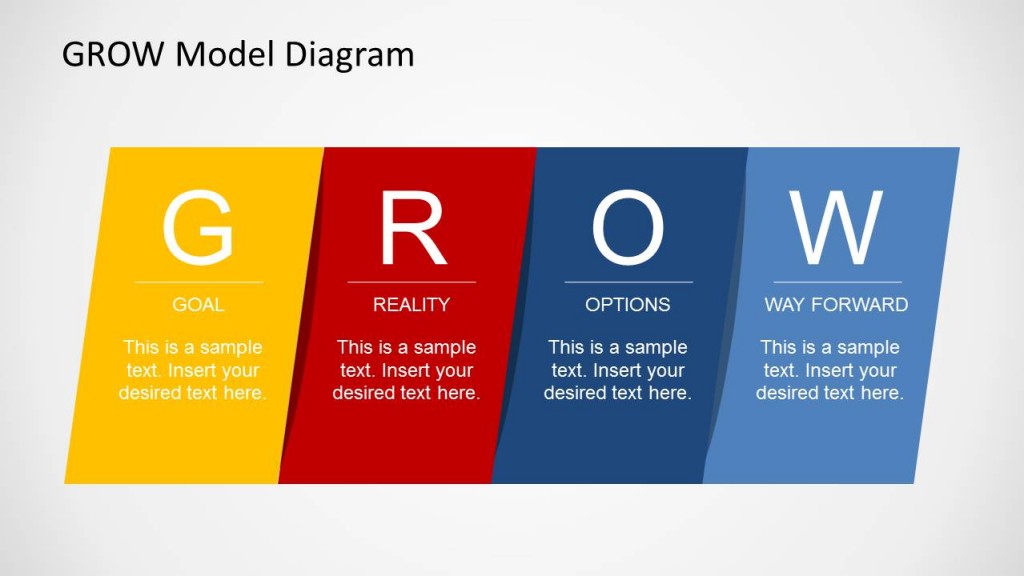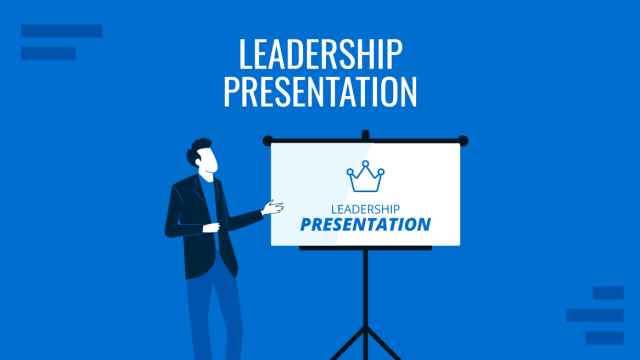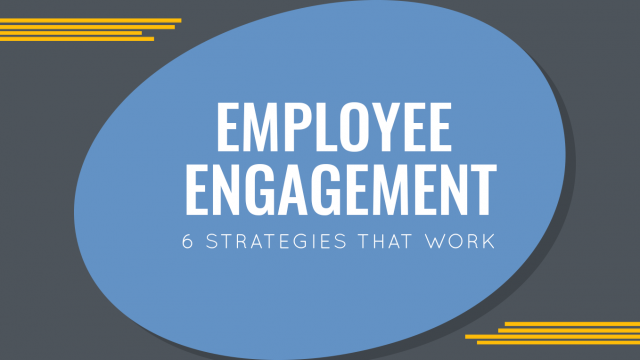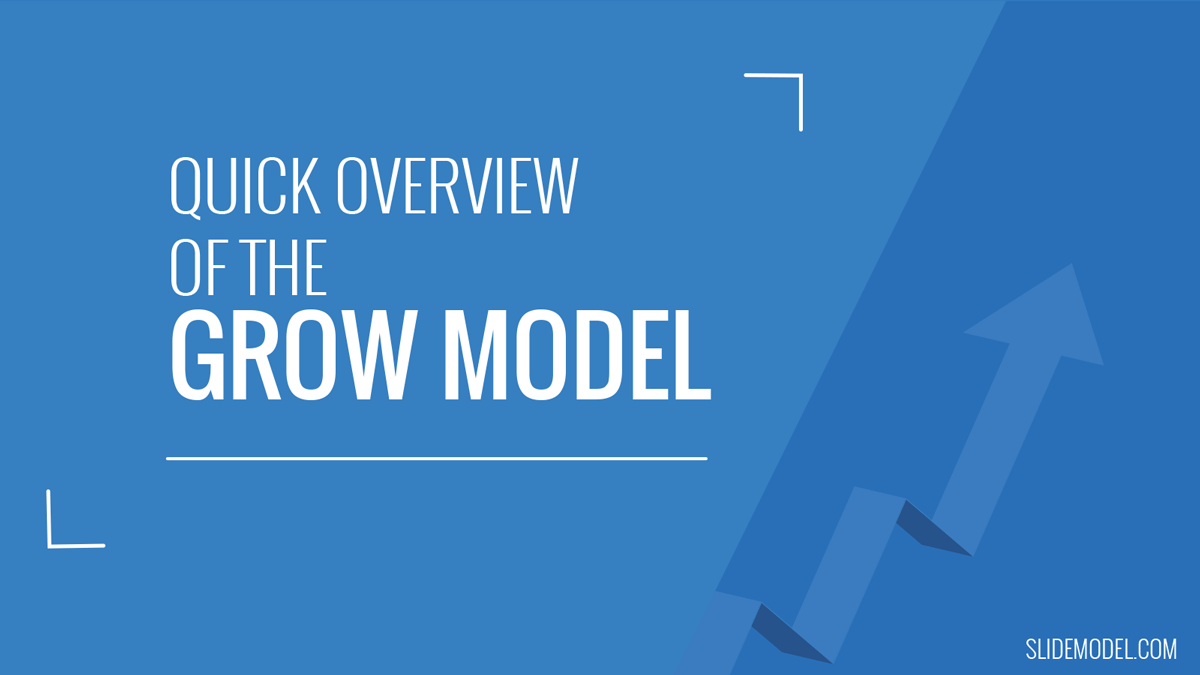
Goal setting and problem-solving are essential parts of being a leader, coach, or mentor. Whether you’re an entrepreneur, CEO, project manager, or coach looking to get the best out of your team, its essential to explore the options available to reach desired goals. One interesting concept to get familiar with is called the GROW model.
What is the GROW Model?
Developed during the 1980s and 90s in the United Kingdom, the GROW model is used to set goals and resolve problems using a simple mechanism. GROW model stands for Goal, Reality, Obstacles (or Option) and Way Forward (Or Will). This simple four-step mechanism can be used for coaching or mentoring to set desired goals, analyze ground realities, look into potential options or obstacles that might hinder progress. GROW is a practical framework often used for coaching and mentoring sessions to help individuals find clarity in terms of how to proceed with the best course of action under the guidance of a coach or mentor. The GROW model can be an effective framework, regardless of the coaching styles a mentor is inspired by or intends to follow.
How to Use the GROW Model
If you’re wondering how to use the GROW coaching model or what GROW model questions to ask during a coaching session, you can look into the basics of this coaching framework from the explanation given below.
What are the Steps of the GROW Model?
1. Set the Goal
Let’s assume you are coaching a project manager with the GROW model . You will first need to start with a question regarding the goal(s) of the coachee. For example, where does the person want to be in the next year? What are their ambitions regarding his current project?
Example: In this example, we will assume that the project manager has to complete Project X by the end of next year, meaning a timeline of14 months, and must stay within the desired budget. He is suffering from a growing backlog of incomplete activities and wants to pull his team together to achieve desired goals. In such a case, the goal will be to complete the project on time within the designated 14 months and to manage his team better. For this purpose, the coachee can also look into various leadership styles that he can choose from to be an effective leader.
2. Analyze Current Realities
The second step of coaching using the GROW model is to analyze current realities. The coachee can explore if steps regarding the desired goal have already been taken. Perhaps they didn’t yield desired results. It’s important to examine the what, who, when and how associated with the desired goal(s).
Example: During the discussion, the coachee realizes that while he does want to achieve the 14-month target to complete his project, his team isn’t as efficient as it should be, and the backlog of work needs to be completed, leaving his team at least 3 weeks behind schedule. He has already talked to his team, tried to motivate them, but 2 out of 6 team members are less efficient than the others. This means that with the current team he cannot complete the task on time.He now needs to consider his options.
3. Explore Your Options
During the third phase, the coachee needs to analyze options and consider achieving the desired goal(s) based on the ground realities. During this time, the coachee can analyze how to remove hurdles, improve efficiency, weigh options, etc.
Example: The project manager realizes that the main issue regarding the backlog has been due to the negligence of the 2 team members who, despite various one-on-one sessions with the project manager and warnings, have failed to work hard enough to complete their tasks on time. One of the two team members is also shifting to a new job and will be leaving in a month, whereas the other team member’s contract is up for renewal in two months.
The project manager realizes during the session that he can replace one or both the team members with efficient ones. He can replace the outgoing team member and give a last warning to the second individual. If he fails to yield desired results in two months, the project manager can ask for his contract not to be renewed and request hiring a new employee. However, since this will not be enough to complete the project on time, he also has the option to use some of the project funds for outsourcing.
4. Establish Will
This is the phase where you need to decide and establish the will to get things done to achieve your goals in line with your available options. You can analyze what you want, the ground realities, obstacles, and available realistic options. Now it’s time to act. During this phase, you might also want to establish how to review your progress, the fine details of the action points, and their execution.
Example: Realistically, the project manager can get the required approvals for all three of these options, and it can help him manage the completion of the project on time. This means that he can replace the outgoing employee, replace or push the second troublesome team member to improve efficiency, and/or use some of the funds from the project to get some tasks outsourced for timely completion. All he now needs to do is to establish the will to act on these solutions.
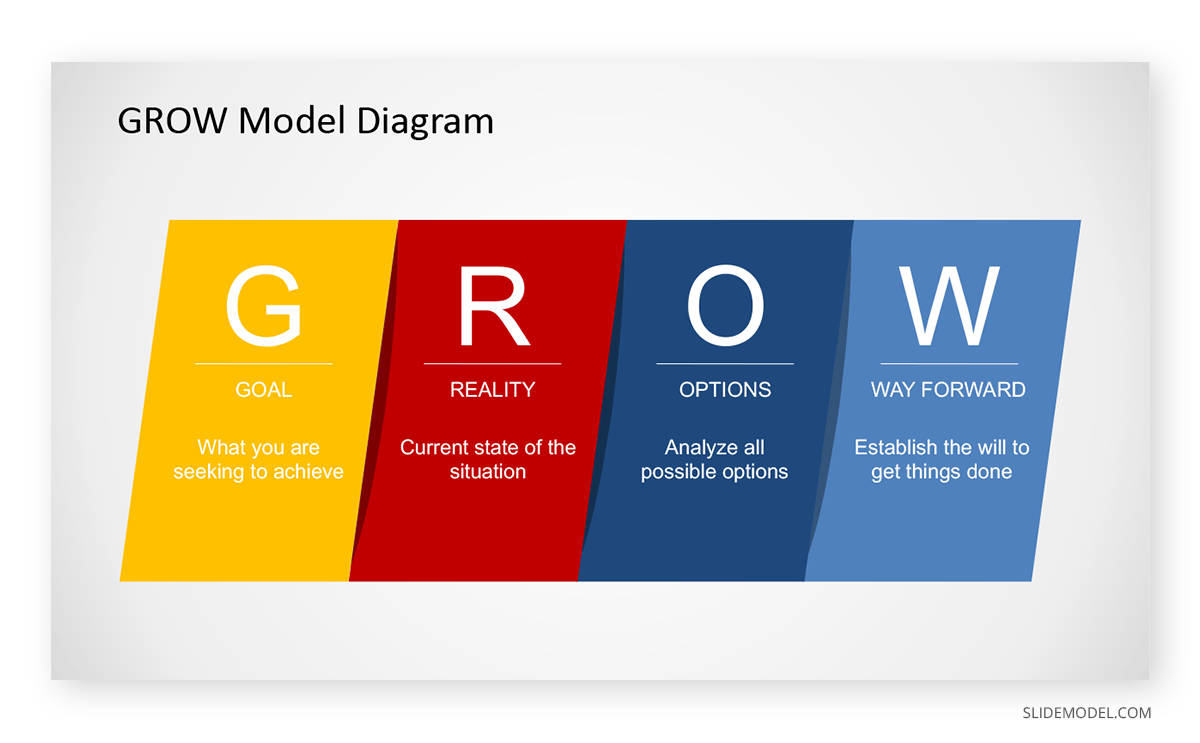
Why is the GROW Model Effective?
The GROW model can be effective regardless of your leadership style. It provides a realistic and straightforward way of getting things done. One of the best ways to understand its effectiveness is to look at the Inner Game method, which inspired GROW.
GROW Model and the Inner Game
The GROW model was inspired by the Inner Game method by tennis coach Timothy Gallwey. He realized that despite understanding his players’ shortcomings, he could not get them to fix them by simply explaining their flaws to them. The parallel between the GROW model and Gallwey’s approach can be understood with this example. Asking tennis players to keep their eyes on the ball might have worked for a short while but it was hard to make it stick in their heads. So, Gallwey asked his players to say ‘bounce’ (out loud) when the ball bounced and say ‘hit’ (out loud) when they hit the ball. This resulted in the players keeping their eyes on the ball and improving their performance without much effort.
What makes Gallwey’s approach and the GROW model similar is to create awareness raising questions to help people discover solutions to their problems by understanding what they might or might not be doing wrong. The argument here is that many people fail to learn from experience and use available knowledge to improve and move forward.
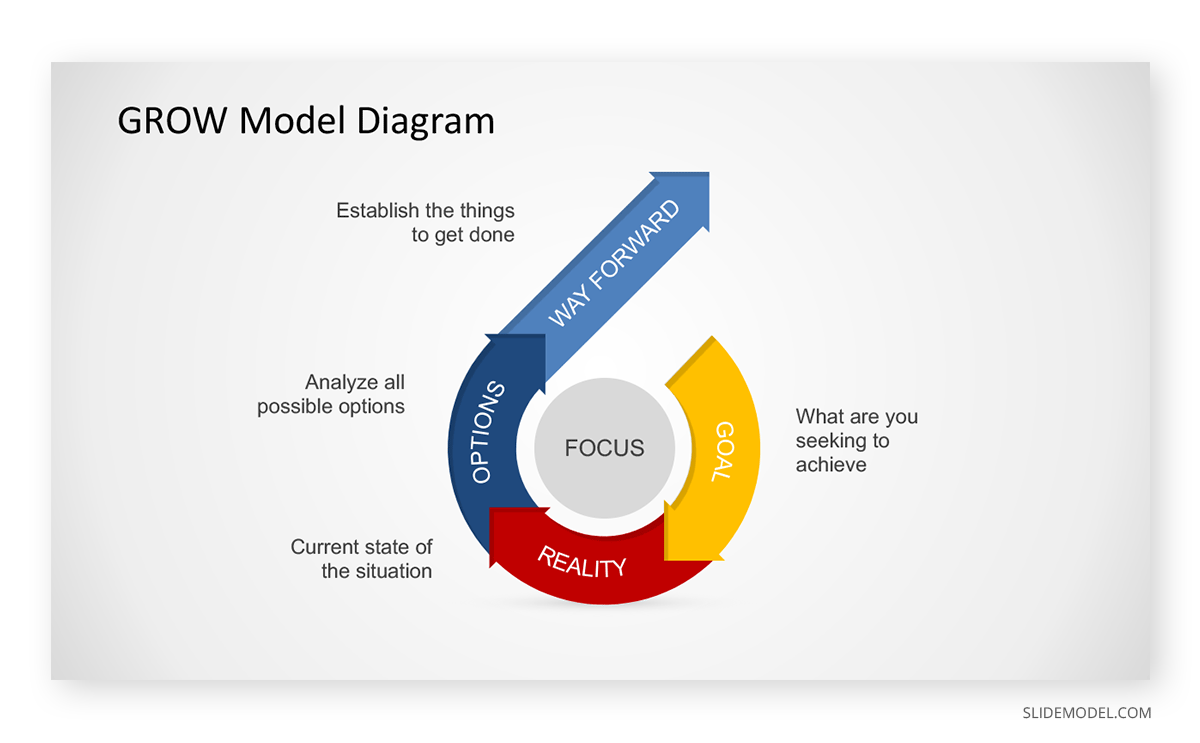
Limitations of the GROW Model
A criticism of the GROW model has been that approaches like GROW do not account for philosophical aspects. This means that while GROW might be suitable for goal-oriented fields such as business or sports, it is not suitable for life-coaching conversations. However, a counter-argument for this has been that GROW has, over the years evolved to include trans-personal goals.
The GROW model, like any other model of its kind, isn’t free of limitations. Below are some of the limitations of the GROW model.
1. Goals Need to be Realistic: The coachee can end up having exaggerated goals that he/she might think are achievable, despite not being realistic. The limitation of the GROW model in terms of goal setting is that both the coach and coachee need to have realistic goals.
2. The Coach Might Not be Aware of Ground Realities: Many organizations hire coaches for training sessions. If the coach is not aware of the ground realities, the GROW model might not be effective since the information received by him/her can be misleading.
3. Uninterested Coachee: Unless the coachee is motivated enough to participate during the coaching session, GROW will not be effective as a framework. Many employees who attend training and brainstorming sessions can lack attention, motivation and interest in what they are being taught. Hence, making the entire exercise useless.
4. Lack of Will: As the final part of the GROW model is to establish the will to get things done, this can be a part which might be skipped by the coachee. This might particularly on people who are uninterested and lack the will to act. Some might even do so in an organization to maintain the status quo to keep a hold on organizational affairs by promoting inefficiency.
Final Words
The GROW model is like a vehicle. It is the driver who needs to ensure that he/she can use it to its full potential to yield desired results. For GROW to be effective, both the coach and coachee need to show interest and resolve to find the best way forward to set goals, remove obstacles, address ground realities and find actionable solutions to achieve desired goals.
